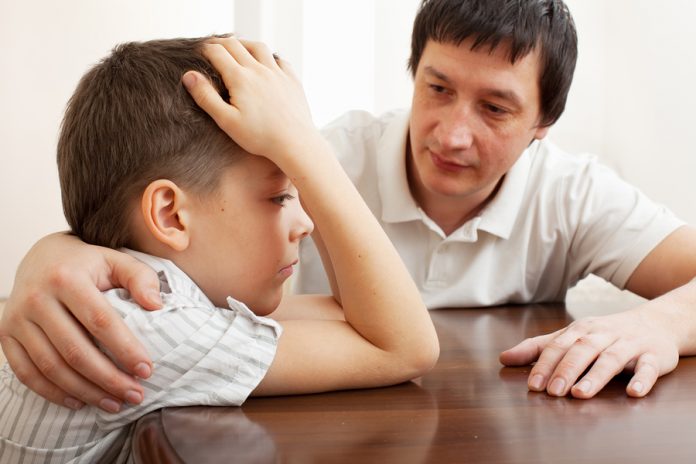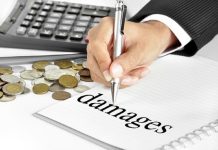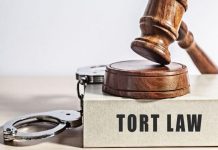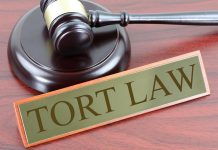This article is written by Shubhangi Sharma, a 5th-year student of BA LLB in Lloyd Law College, Greater Noida. The articles discuss vicarious liability in the case of guardian-ward relationship.
Table of Contents
Meaning of vicarious liability
Vicarious liability is a condition in which one party is partly or wholly held responsible for the unlawful actions of a third party. The third party is also part of the obligation. Vicarious liability may arise in situations where one party is held responsible (and the third party has control) and is negligent in performing that responsibility and exercising that control. In the case of vicarious liability is that liability where one person is liable for the act of another person. In order that the liability of A for the act done by B can arise, it is necessary that a certain kind of relationship between A and B, and the wrongful act should be, in a certain way, connected with that relationship. The common example of such liability is:
- Liability of principal for the tort of his agent.
- Liability of partners of each other tort.
- The company and its directors.
- Owner and Independent Contractor.
- Parent’s liability for the tort of their ward.
- Liability of the master for the tort of his servant.
In the case of the Exxon Valdez oil spill, the Exxon shipping company came under vicarious liability for a series of events that caused 10.8 million gallons of crude oil to spill into the sea and affect the coast. Among other factors, the company was blamed for the lack of supervision on the side of captain, fatigue among crew members riding in the oil tanker, as well as the status of radar equipment that could help prevent the ship from moving. Although the employer is not the one who commits an unlawful act, the employer is held liable because it is held responsible for the actions of its employees when they are on the job and is considered capable of preventing and/or limiting any harmful act done by its employees. Employers may be able to avoid vicarious liability by using reasonable care to prevent illegal behavior.
In addition, there is no existing law for minors in India with reference to tort. But we have a provision in criminal law that a child under 7 years of age cannot be held liable for a crime. Now, if we have any provision in criminal law, why has not an act been passed yet which takes tort and minor in consideration, knowing the fact that children make civil mistakes most of the time instead of committing crimes.
Vicarious liability is based on two legal maxims
Quit facit per alium facit per se
This maxim also applies in the case of principal and agent. When a person authorizes another person to perform a particular task, he becomes the chief and the doer becomes the agent. In this case, the principal becomes liable for the act of the agent. So, this legal maxim of vicarious liability is Quit facit per alium facit per se. It also implies that the employer (or senior) is responsible for the work of the employee.
Respondeat Superior
This legal maxim means “Let the Superior be Liable”. If we have to understand this maxim then we can take a daily life example i.e. we often see seniors sending juniors to seek adjournments or file applications. If the junior is not able to understand the task well or tries to show his or her legal skills by making some commitment even if not specifically instructed by the senior person, then in that case, the superior is responsible to answer judge and also to clients.
Liability of parents in Children’s tort
Speaking of parents, they can be held liable if they owed a direct duty of care towards their child while he or she is liable for the tort. Some parents who have faced the suits under parental responsibility laws have argued that laws interfere with parental rights, as in the course of defining poor parental supervision, the law must define what “good” parent means? While parents have the fundamental right to care for their children, as the Supreme Court has recognized, this right comes with a duty to supervise the child’s activity and have control over them. Courts have regularly held that states have a compelling interest in promoting the public welfare by holding parents accountable when they fail to fulfill that duty. This is the basis on which courts abide by parental responsibility laws. As a general rule, a parent or guardian cannot be held liable for the tort of a child. There are two exceptions in this rule:
When the child is the father’s servant or agent, the father is vicariously liable for the act of a child. It must be taken into consideration that, in such a case, the father is liable for son’s tort, not as his father, but in the capacity of an employer or principle.
In the case of, Hagerty v Powers (1885), In Haggerty, an eleven-year-old boy shot and injured another child. The plaintiff pleaded that the father “let his minor child suffer the loss of a pistol” by negligence and carelessness to handle the pistol. Despite those words, the court still found that the parents were not financially responsible for their son’s actions.
When a father himself, by his own negligence afford his child an opportunity to commit a tort, he is liable.
In the case of Bebee v. Sales, the father supplied an airgun to his son who was 15 years of age. Even after so much of complaints of mischief caused by the gun, he allowed the gun to remain with the boy, who accidentally wounded the plaintiff. For that the father held liable.
Historically, under English and American common law, parents were not liable for their children’s acts of a tort only on the basis of their parent/child relationship. It was necessary to make parents liable for wrongful participation by parents in civil. Involvement may include encouraging or focusing on the child’s misconduct or misbehavior, enabling the child to engage in wrongful conduct or tracking the child’s manifestly dangerous conduct.
A teenager who recklessly and negligently smashed his car into someone’s vehicle committed a tort under common law, but his parents would not have been held liable if they had no reason to know he would be driving negligently. But that left the injured people without a source of compensation for their losses. Now, all 50 states of the US have laws of some sort that hold parents liable for damages from their children’s misconduct. Under many of these laws, a parent’s lack of knowledge about the child’s conduct is irrelevant, and the parent is liable for the harm caused by the child’s negligence or wrongdoing. This is a form known as “vicarious obligation”.
Unlike criminal law, personal liability can be enforced in cases of civil wrongdoing committed by a person without wrong intentions or proof in case of wrongdoing by a citizen. The justification of this theory is that society benefits by transferring the burden of harm or injury to the person who is able to bear it. In the case of a parent’s liability for the harmful acts of their children, the parents themselves are in a better position to deal with the loss than the children which are made by the conduct of their children, who usually can compensate for someone whom he has injured.

Parent’s civil liability towards their child
Each state in the US has its own law regarding the civil liability of parents for the acts of their children. Parents can be held responsible for the harmful actions of their children in the same way that employers are responsible for the harmful actions of their employees. This concept of law is commonly known as vicarious liability. So, the parents are indirectly or vicariously liable for the damages done by their child. There are various parents’ civil liability and the ways in which parents can be forced to pay damages for their children’s acts.
Liability for compensating the victim
Various states declare parents financially liable for damages caused by their children. When a child attains the age of 18 years (no longer a minor) then the parents will not be liable for paying damages for their civil wrongs. After attaining the age of majority, there is a termination of rights of parents over a minor, the parent will no longer be held liable for the act of child because the legal relationship of child and parent has ended up. In some states of the US, the government put some limit on the amount of which parents will be liable. The civil liabilities vary from state to state. Some are the acts which include the responsibility of parents. They are:
- Vandalism with government or school property.
- Destruction of national and state flags, cemetery headstones, public monuments or historical remark.
- Property destroyed in hate crimes based on race or religion.
Personal damage done in relation to these acts will lead to parent’s liability to pay for damages.
Negligent supervision
A parent is liable for the child’s negligent act if the parent clearly knows or had reason to know about the civil wrong which is necessary to control the child and parents played a negligent role in their part by not taking some reasonable actions to stop him from doing so. In the case of Robertson v. Wentz, the Court stated that “the ability to control the child, rather than the relationship as such, is the basis for a finding of liability on the part of a parent. The absence of such ability is fatal to a claim of legal responsibility. The ability to control is inferred from the relationship of parent to minor child, as it is from the relationship of a custodian to charge; yet it may be disproved by the circumstances surrounding the particular situation”.
In other words, the evidence must show that the parents had a duty to stop the child as a reasonable person from doing some civil wrong; to a certain extent which means that some kind of physical control must exist and notice that the child has a tendency to act in a certain way, that is, whether it was foreseeable or not. This kind of fact involves an in-depth investigation that is usually not easily answerable. The key to reaching this point is a lot of evidence to show that parents knew or should have known about the kind of acts their child had committed that has caused damage or injured that person. The liability of negligence is not limited to parents only. If any child is in custody of grandparents, guardians or anyone else who has the control of him will be held liable for the act done by him.
Cases
In the case of Newton v. Edgerly, the father was held liable when he supplied his 12-year-old son (who was young for his years) with a 710 rifle without proper instructions and an accident occurred.
In Emery v. Emery, the California court decided holding that a parent is subject to an action in tort for wilful misconduct (complaint alleging that a minor child was driving an automobile under the direction of his father, was unskilled, had not slept for twenty-four hours, and that speed was excessive-facts known to parent). In this case, the parents will be held liable.
Conclusion
In particular, we recognize various situations in which a minor can be prosecuted. As discussed, the minor must be treated on the basis of reasonability out of his or her age. A parent, guardian or others who have the custody of the child will be held liable for the civil wrong done by him and also for the damages and injury caused by him. A parent may be liable to pay penalties or compensation for the damages. If the child is minor i.e. below 18 years of age then parents will be held liable for their civil wrongs. If the child has attained the age of majority then parents will not be liable for compensating the damages done by him in tort.
 Serato DJ Crack 2025Serato DJ PRO Crack
Serato DJ Crack 2025Serato DJ PRO Crack










 Allow notifications
Allow notifications



